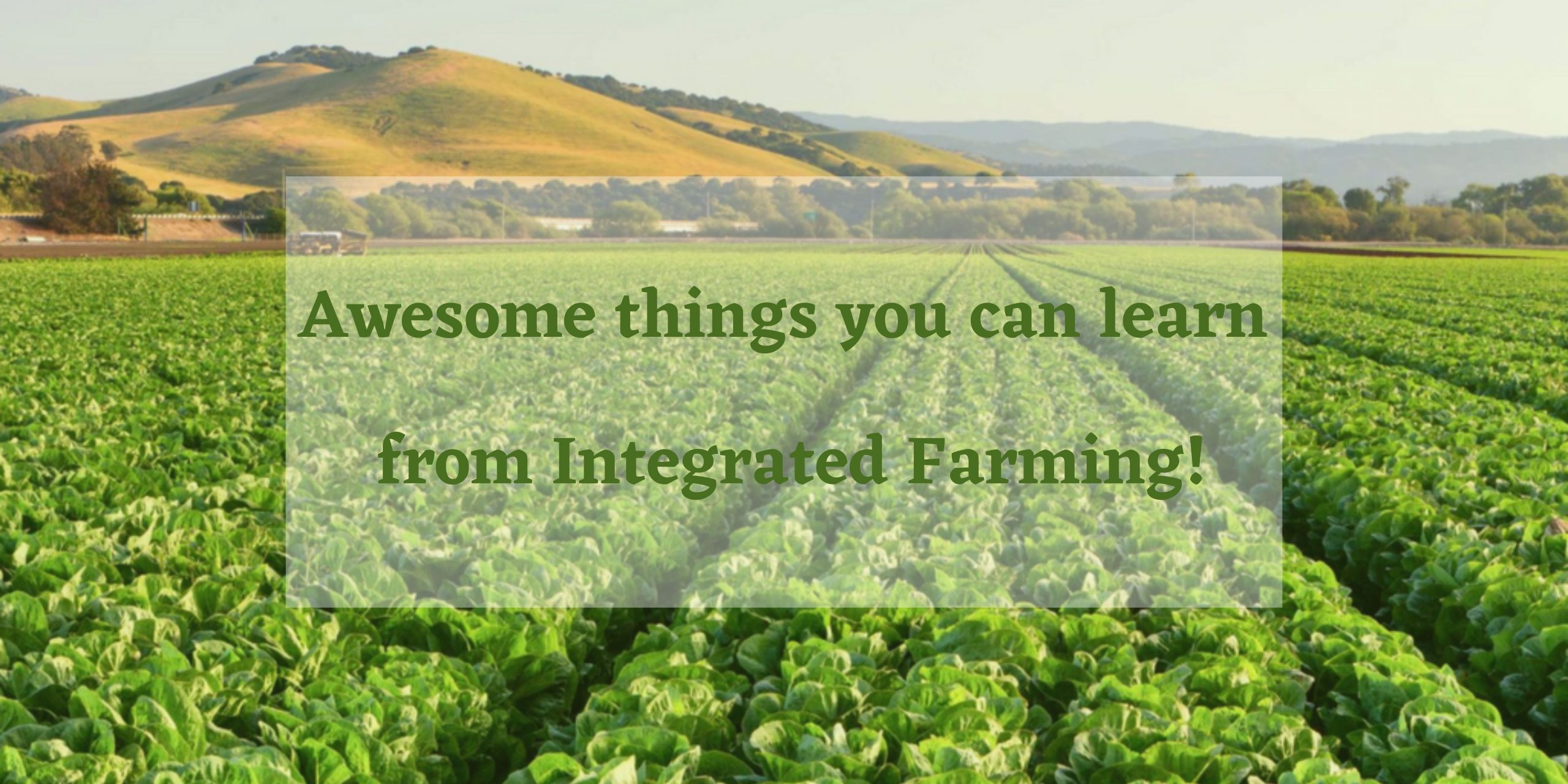
Awesome things you can learn from Integrated Farming!
The integrated farming system model, its advantages, types , and example are expounded in this post. In integrated farming, crop production and livestock management combine to complement each other in a pleasant symbiotic connection that is economically sustainable and lucrative. It is ecologically friendly and provides the benefit of broadening production at the time of integration. Integrated farming is a different technique or farming practice developed in China and is now being promoted worldwide as an all-around development of agriculture, including animal husbandry and other connected occupations. Integrated farming has the potential to make agriculture lucrative, which has previously been proven to be mostly a subsistence industry and a key cause for people abandoning this age-old profession and migrating to cities. The primary constituents of any IFS are plants, animals, birds, and trees. Multi-tiered cereal, legume or pulse crops, oilseeds, and forage crops are examples of subsystems within a crop. Integrated farming includes livestock farming which is of utmost importance as it has numerous benefits. There are several types of livestock, including milch cows, chickens, goats, sheep, and bees.
Benefits of Integrated farming
As an Indian case study, it is best understood by looking at how the use of integrated farming practices, such as planting of improved Ber along with intercropping, honey beekeeping, and a goat unit, transformed an area of degraded land in Rajasthan into a major revenue generator, along with improving the soil quality just like organic farming and decreasing expenses on fertiliser and pesticides. The integrated farming system model is a powerful teaching and research tool for assessing the impact of management and technological changes on the entire farm. It reduces hazardous agrochemical and pesticide usage in order to give a healthy environment and food free of pollution to the public at large. It also avoids chemical fertilisers which have many negative consequences. Early nutrient recycling improves the efficiency of natural resource utilisation. By intensifying crop and associated operations, the IFS gives a chance to prove effective output per unit area per unit time. It uses the least expensive waste material from one component. As a result, manufacturing costs are reduced, and a connection is formed for the reuse of waste materials and the removal of middleman intervention in the majority of inputs utilised.
Approaches to integrated farming
There are a variety of approaches to integrated farming that may be utilised depending on the local environmental variables. Some examples of this include Fish-Duck Integrated farming, Cattle-Fish Integrated farming, and Poultry-Fish Integrated farming, as well as combinations such as livestock-honeybee integrated farming and Fish-Duck Integrated farming. The integrated farming system model allows for the integration and connection of components to accurately portray the myriad natural and physiological processes that take place on a farm. Many benefits of integrated farming have yet to be realised by farmers; therefore, they cannot reap the rewards. There might be several causes for this failure, including – This agricultural approach is not well understood by farmers, which prevents them from using the finest integrated farming techniques. Over eighty percent of farmers have a property that is little more than five acres. Due to the lack of advanced tools, they cannot be utilised for mechanised farming. In addition, the shortage of money makes it difficult to purchase and maintain expensive cattle. Though the government provides low-interest loans to farmers, ranchers, and mechanical equipment purchasers, the government’s rules are limiting. Government departments’ inherent corruption further inhibits farmers from contacting them.
How is integrated farming possible?
India, which relies on agriculture for 58 percent of its food supply, has to look at all techniques that make agriculture commercially feasible and ecologically sustainable to achieve its aim of ‘Inclusive and Sustainable development’. This kind of integrated farming employs a multicultural approach that is both environmentally benign and economically viable. The advantages of the integrated farming system model lie in the fact that on a process level replicates all of the essential components of a farm. An integrated Farming System (IFS) is a production platform built on a few crops, animals, and pertaining subsidiary businesses in such a way that each system maximises the utilisation of nutrients and minimises the negative impact of these businesses on the environment. It is an interdependent, interconnected, and often intertwining system. Organic supplementation is achieved by effectively using the by-products of connected components, allowing the production base’s capacity to be sustained for considerably longer periods. We connect natural ingredients to provide a variety of nutrition sources, and waste materials are successfully recycled in IFFS by connecting suitable components, reducing pollution. Because of the relationship of businesses with crops, eggs, dairy, mushrooms, honey, and silkworm cocoons, a steady supply of funds to the farmer throughout the year is ensured.